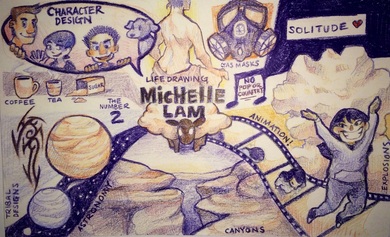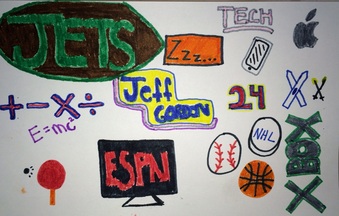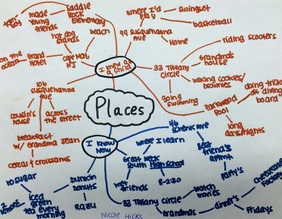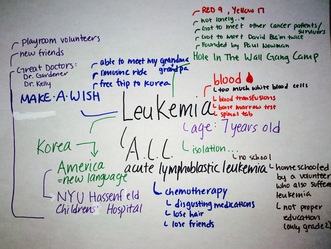Teach Mind-Mapping
guide Self-Discovery
Want unlimited access to more articles like this, as well as video clips and full-length books?
Subscribe here:http://www.heinemann.com/digitalcampus/referenceLibrary.aspx
"Know thyself" the Greek maxim states. But what teachers are giving their students the time and tools to accomplish this all-important task? You could be! And it wouldn't even be that hard. Mind mapping takes a minute to learn and leads to a lifetime of benefits. Here's how you can incorporate mind maps into your teaching practice:

Assignments like these are student-centered because the child's life experiences are at its core. Most of school is about adults dumping massive quantities of information INTO the students.
"ID Cards" is the opposite: It asks students to pour OUT. Authentic Language art opens powerful and unexpected doors to discovery and inspires growth. This assignment creates momentum, too. The rest of the course relies on mind-mapping skills and repeatedly asks students to explore themselves through creative arts.

Creative submissions are not graded; they are evaluated as either "teacher-edit" or "final". If the piece is marked as the former, the student is coached to revise and resubmit until it is final. This system helps to nullify the difference in art-skill between students like Jeff and Michelle. If I thought Jeff could do any better, I'd mark his work "teacher-edit" or encourage him to keep working on the piece. Generally speaking, students tend to work to their ability when intrinsically motivated to create meaningful art.

These exercises motivate students to probe deeper by engaging their subconscious, digging for ideas, and creating connections to our reading and writing lessons. The time we spend on them is enjoyable, insightful, and educational.
"Places" kicks off my lesson on setting, which dovetails into memoir. I suggest the subtopics "Places I knew as a child" and "Places I know now," while also encouraging them to follow their own instincts, add original branches, and keep searching for true details (the "pebbles" as Atwell calls them).

In the workshop environment, these exercises are valuable tools of collaboration, reflection, and self-invention.

I never asked Mige to write about "Leukemia". She chose it herself because it allowed her to reflect on her childhood battle against this disease. The mind-map process took her on a journey through many important events in her life, including moving to the United States, undergoing chemotherapy, and being homeschooled.
This piece helped Mige accomplish her goal of creating three mind maps in the quarter, and it inspired a memoir she wrote later in the course.

The result? A piece teeming with ideas symbols, and the search for identity. "I started in the middle of the page with a zipper," she said. "[It's] about uncovering feelings and thoughts that otherwise would stay locked inside."
Beth created this piece nine years ago and she's now a teacher herself. You can click here for a PDF of a reflection she recently wrote about this piece, where she explains many of the details in the work and reflects on their importance.

"Yes!!" I said. Then I learned that "KTG" means Killing The Game; that "Dope" still means cool; and that the Rolling Stones are still quite popular.
 RSS Feed
RSS Feed